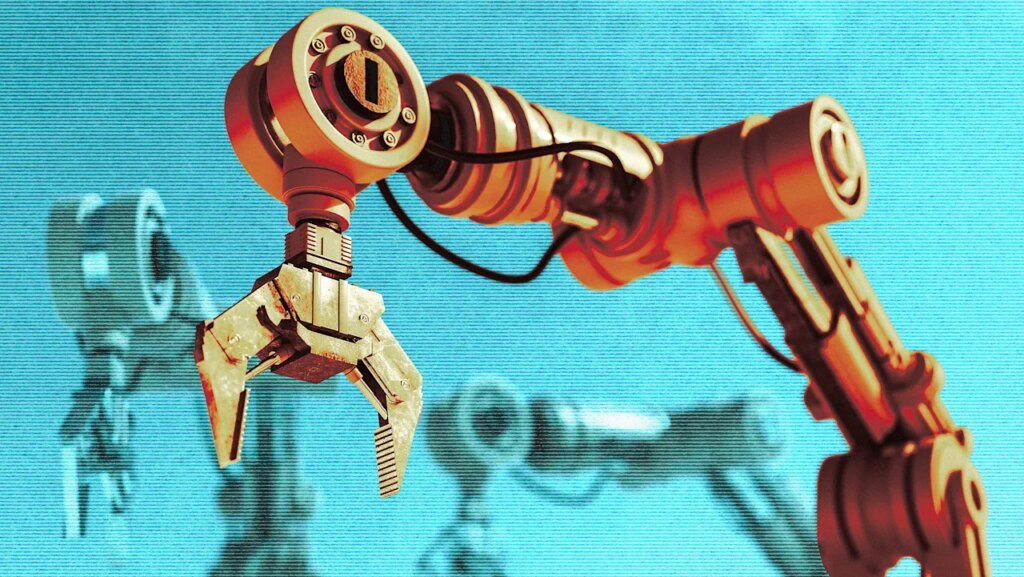Technologies from AI to advanced robotics have been celebrated for their ability to lighten people’s workload. But despite their promises, these technologies aren’t being used to improve workers’ lives or keep them safe. In 2023, 385 workers died every day due to hazardous working conditions, with over 3 million more work-related injuries and illnesses reported that year in the United States.
Meta, Microsoft, Amazon, and Alphabet spent a collective $155 billion on AI development in the first six months of 2025—close to what the entire U.S. government has spent on education, training, employment, and social services since the start of its fiscal year nine months ago. Yet, very little of this investment has gone to make workers’ lives safer. What does this say about us as a society?
In health care, a common cause of workplace injury is strain from lifting and physically assisting patients. Assistive technology could go a long way to preventing these common injuries—technologies like robotic exoskeletons, which can be applied in healthcare settings for this purpose, already exist. But we do not see companies racing to build the best robotic assists for care workers. Instead, thousands of companies are creating chatbots that replace their customer support staff or automate away entry-level roles.
In fact, robots actually seem to be making warehouse workers’ jobs worse. Speeding up processes with robotics requires workers to speed up as well—leading to increased injuries. Several investigations have found increased rates of injury in warehouses that use robotics; between 2016 and 2019, Amazon warehouses with robots had a 50% higher injury rate than those without. And even in 2020, when Amazon temporarily relaxed many of its requirements to work at a certain pace, warehouses with robotics had a 14% higher injury rate than those without.
While warehouse robots now come with more safety protections, updating older equipment with new safety features does not seem to be a priority. In fact, safety doesn’t seem to be a priority.
During a visit to a large warehouse facility a few years ago, I watched workers packing boxes at lightning speed, surrounded by screens and robots. I also saw aggressive signage throughout the facility, warning workers that heavy machines could begin moving at any moment. The message was clear: If you were injured it was your fault for not being careful enough.
Neglect of worker safety is not new—throughout U.S. history, production speed and profits have outweighed the value of human lives. While the Bureau of Labor Statistics (BLS) shows a pretty consistent year-over-year drop in overall workplace injuries and fatalities, the change is minuscule: Injuries have dropped from 2.8 per 100 workers in 2019, to 2.4 in 2023. Meanwhile, death rates are increasing for workers of color: In 2023 Black workers faced their highest fatality rates in 20 years, and Latino worker deaths have risen steadily since 2020.
Powerful health and safety technologies exist but are vastly underutilized. A new sensor could help farm workers, one of our most poorly paid but important workforces, prevent dangerous heat-related illness. Wearable smart devices can monitor air pollution and alert workers—from miners to cleaners—of dangerous air quality. Other smart tech can help correct bad posture that could lead to injury or ensure machinery shuts down automatically if a worker gets too close. These technologies could prevent harm for many workers but we need to invest in them and—crucially—give workers input and decision-making power to ensure the technologies we invest in will effectively address their needs.
There are companies leading the way on consulting workers when implementing new technologies, like Microsoft, which is working in partnership with the American Federation of Labor and Congress of Industrial Organizations (AFL-CIO) to get worker input on AI development. However, many lower-wage professions are unlikely to get the investment needed to implement advanced worker safety tech. Updated workplace safety regulations, which account for the possibilities unlocked by new technologies, are needed to ensure workers are getting access to lifesaving equipment.
When I envision an economy employing advanced technologies, I do not think of one where workers get their limbs amputated in factories, suffer lung damage from cleaning chemicals, or get stress injuries from being asked to work faster and faster for meager pay.
We need bold action—regulations that require the use of safety tech, incentives for companies that invest in it, and worker voices at the table. Policy makers and business leaders can help us course correct; we need worker protections for a new age of technology and investment in tech that centers the needs—and safety—of workers.

